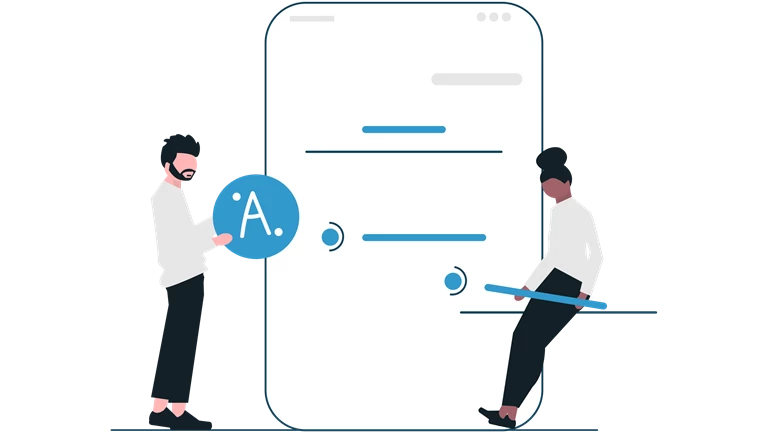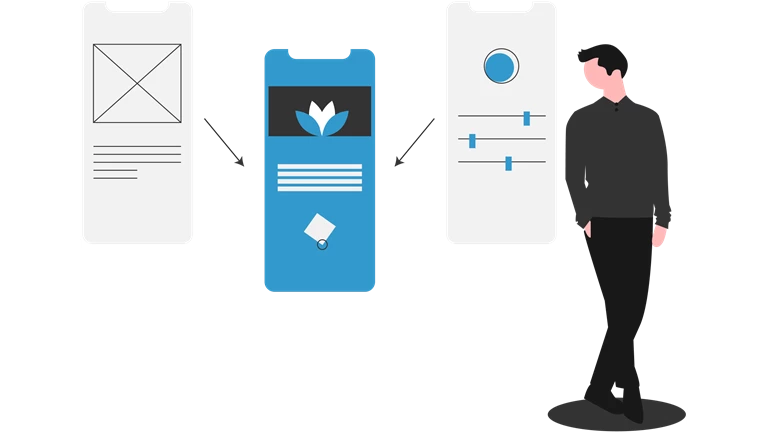
Information Architecture
KNUT provides information architecture services that are essential to the success of any organization—from small businesses to large enterprises. Our services are designed to help companies identify and organize data in an effective, efficient, and secure manner. Let’s optimize your website navigation, content architecture, and, ultimately, user experience.
Do You Need Help Optimizing Your Website?
Information architecture is the structure behind how information is presented and organized on websites, apps, and other digital platforms. With a smart information architecture, users have an easier time finding the information they need, leading to improved overall engagement and a better experience.
Do you ever find yourself thinking:
Taking advantage of KNUT’s information architecture services will give your business a competitive edge. How?

Create an Organized and Cohesive Digital Experience
Increase Brand Recognition
Increase brand recognition with a unified and consistent style of presenting content across all channels
Improved SEO
Improved search engine optimization, resulting in better search engine rankings and increased website visibility
Efficient Maintenance
More efficient website maintenance, with a framework in place for efficiently and quickly adding new products and content
Reduced Cost
Cost savings, as fewer resources are required for website navigation and navigation-related customer service inquiries
Time Savings
Offer time-saving benefits through quick access to accurate information

Choose KNUT for seamless and stress-free information architecture services. Let us handle the complexities of managing your website or app so that you can concentrate on growing and scaling your business.
Details
Key KNUT Information Architecture Services Include:

Strategy
Developing IA Strategy
Define information architecture strategy and refine target audiences, refine messaging, and identify ideal customer journeys
Content Modeling
Create and refine content models to identify content types, user roles, and business objectives

Wireframes
Site Navigation
Develop site maps and page hierarchies to make sure users can easily find content
Wireframing and Prototyping
Create wireframes and prototypes to help clients visualize their content layouts and user experiences
Frequently Asked Questions
What is the main purpose of information architecture?
The main purpose of information architecture is to provide an organized and usable structure for the presentation and navigation of website content. This structure consists of a set of processes, tools, and methods to develop a website’s content, indexing and taxonomies, page structure and navigation, labels and search features, and design. Information architecture is an important part of overall user experience design, as it helps organize website content that is easy to find and use, increasing website performance.
How will our architecture scale in the future as our data grows?
Sufficient information architecture must be designed to handle any type of growth your data may experience. By implementing your information architecture within KNVEY Core's modular design and centralized site management, you are able to quickly and easily add components as needed to support larger data sets. Additionally, strategies such as caching and sharding will ensure that the architecture can adapt to changing data sets with minimal interruption. As your data sets grow and evolve, you can be confident that KNVEY will be able to keep pace.
How long will it take?
An Information Architecture project can vary from taking a few weeks to months to complete, depending on the company's needs and requirements. During this process, analysts will craft a detailed plan to showcase how content in a website or application is organized, labeled, and navigated. This includes conducting research, analyzing the findings from user interviews, creating data models, developing content taxonomies, and creating navigational schemas. The project should include ample time for testing and validating user feedback on both the plan and any prototype solutions.
Who benefits from an information architecture strategy?
Having an effective information architecture in place is a win-win for both your company and users. It allows users to find what they are looking for quickly and easily, and for companies to better connect with customers, take advantage of digital opportunities, and maximize their digital presence and strategy.


